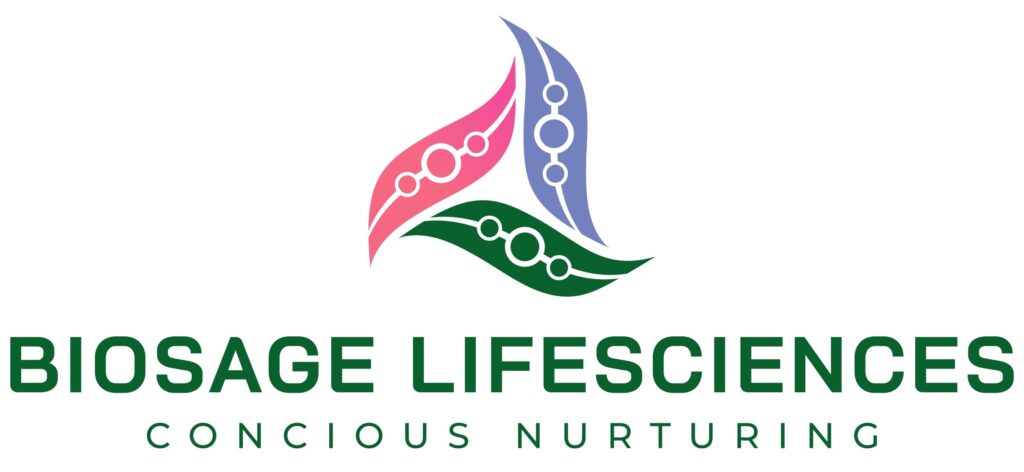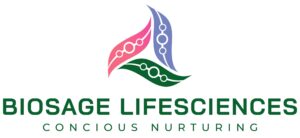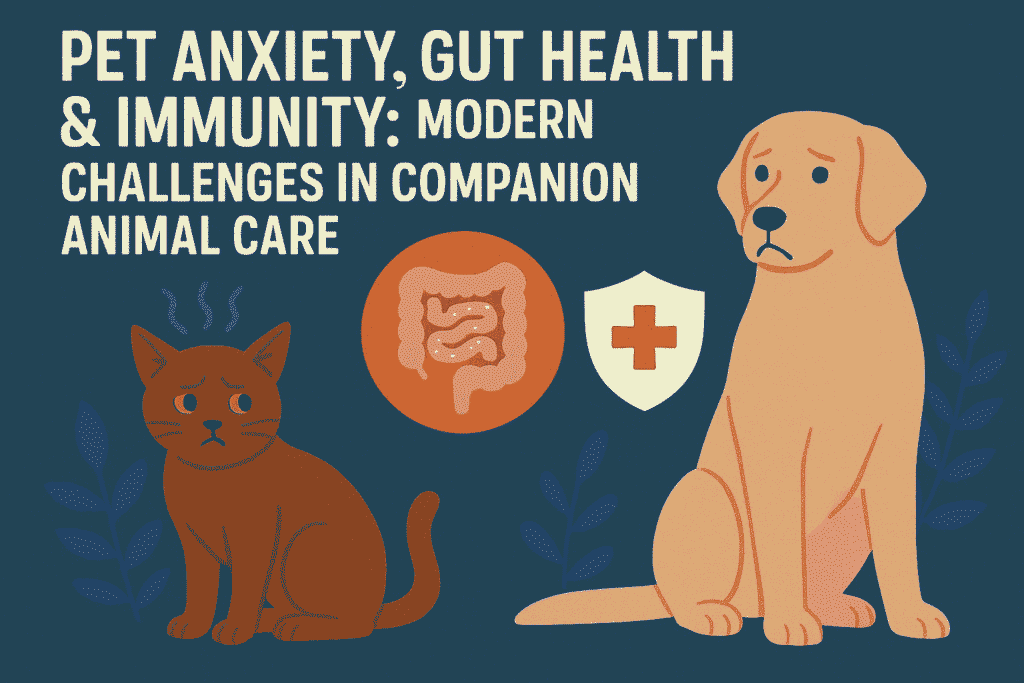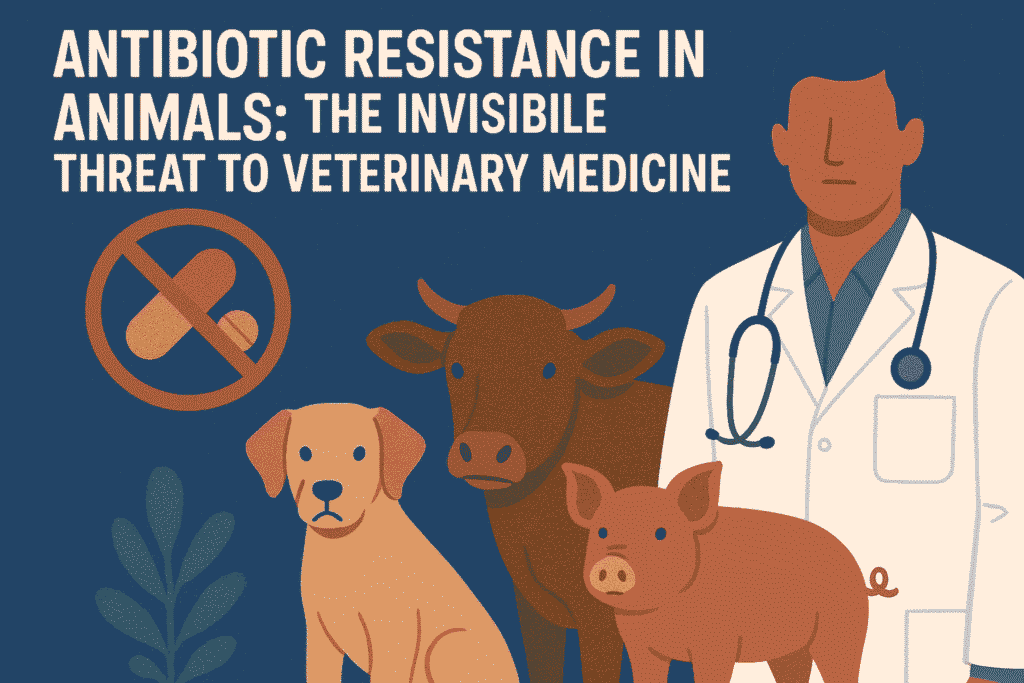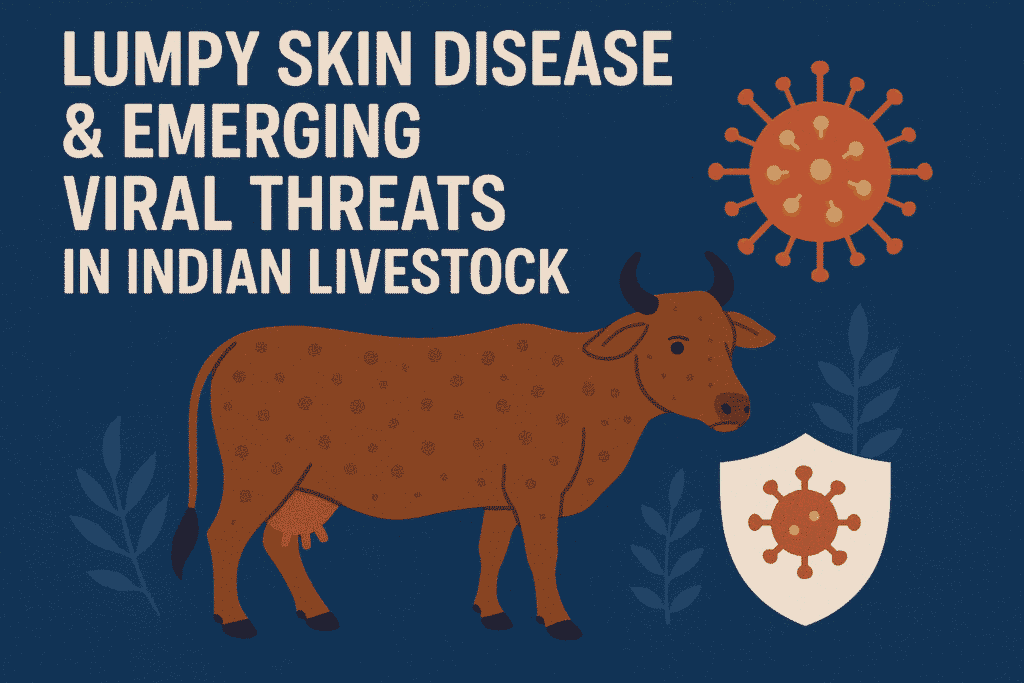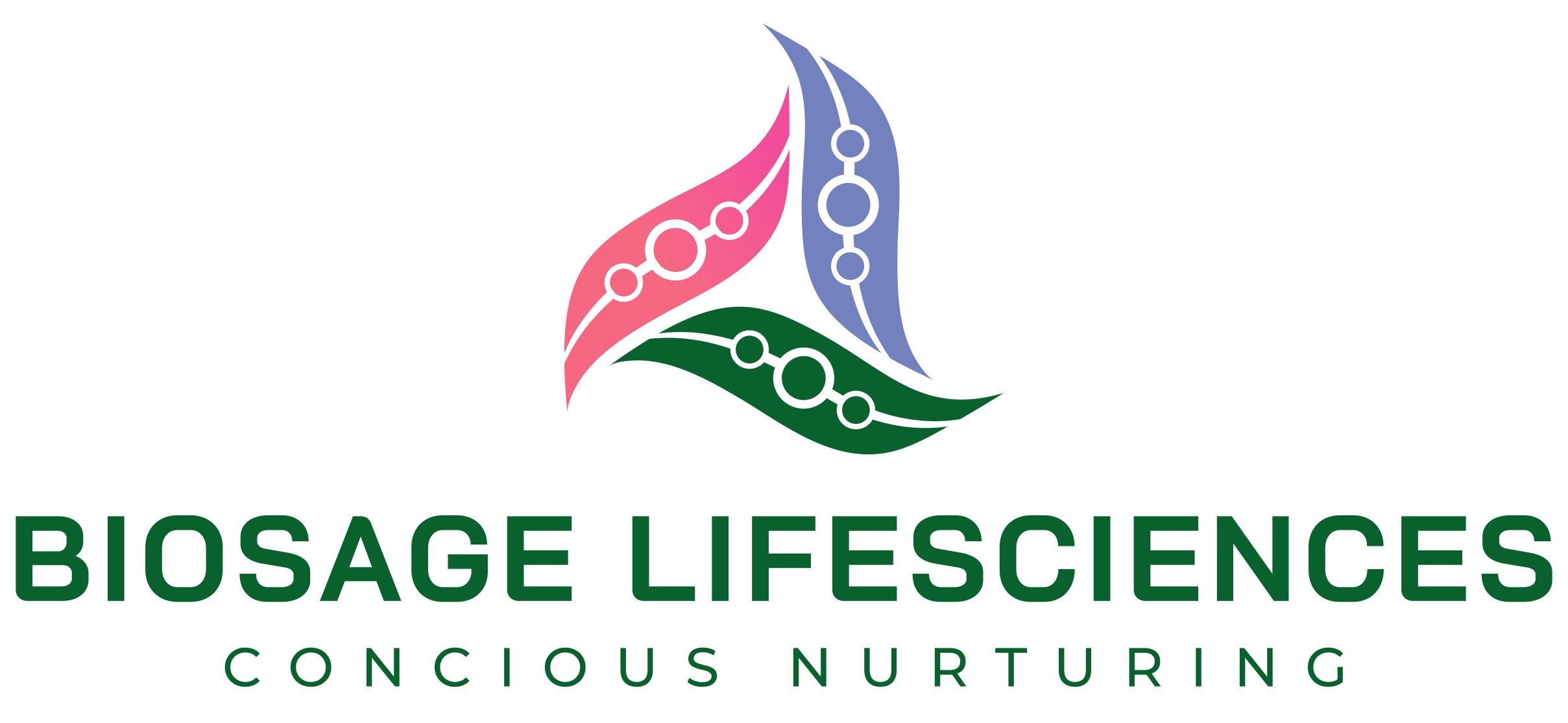Pet Anxiety, Gut Health & Immunity: Modern Challenges in Companion Animal Care
Introduction Modern companion animal care increasingly focuses on wellness beyond traditional health concerns. Anxiety, digestive health, and immunity are central to pet wellbeing and require integrated management strategies. Anxiety and Stress in Pets – Common in indoor pets due to separation, noise, and urban environments.– Symptoms: excessive vocalization, pacing, destructive behavior.– Links between gut microbiome and behavioral health (gut-brain axis). Gut Health and Immunity – Microbiome plays a critical role in immune regulation and disease prevention.– Dysbiosis can lead to GI disorders, inflammation, and susceptibility to infections.– Probiotics, prebiotics, and functional diets can support gut and immune health. Practical Strategies for Veterinarians – Diet optimization with digestible proteins and fiber.– Supplementation with probiotics under veterinary guidance.– Behavioral enrichment and environmental modifications.– Regular monitoring to detect early signs of stress or GI issues. Conclusion Integrating mental health, gut wellness, and immune support is essential for modern veterinary practice and companion animal care.
